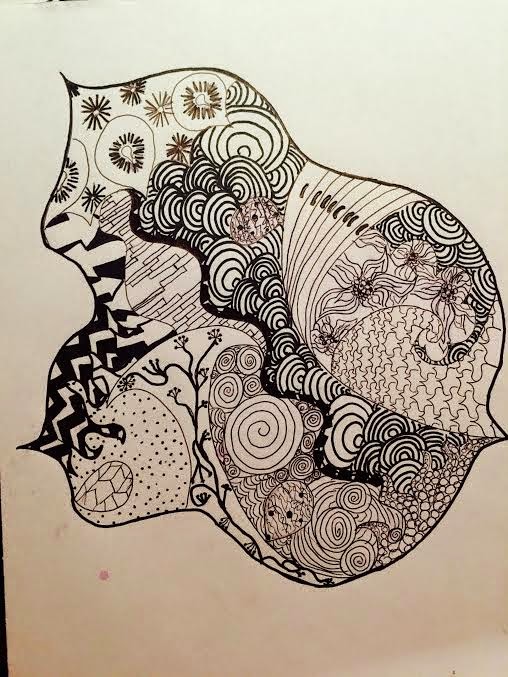 |
| (Question #3) |
Final Exam
1. How has your thinking about art changed during the semester? Was there a particular unit that you learned a lot in?
Throughout the semester, I learned that art is more than something to do for a fun free-time activity. It can convey meaning, emotion, or even be functional. I particularly learned a lot in the teen inspired/NCMA unit. I also went from liking hard lines to liking angles and twists and curved lines (pictured at bottom).
2. What do you notice about how your art making skills, including how you interpret themes, have changed when you compare your drawing from the beginning of the course to your more recent one?
When I'm given a topic or medium for art, instead of just creating the first thing that comes to mind, I've learned to take multiple ideas (make a mind-map if necessary) and combine them into a complex piece. I am now able to use my skills to take a simple concept and spin it to make a more interesting design.
 |
| Me under Gyre |
3. What unit or project was your favorite? Why did you like it?
I really enjoyed the teens inspired/NCMA unit the most, not only because I learned the most, but also because it gave me so many options as well as a few ideas after I chose a piece.
Fun Fact: I loved the creation, Gyre, from the NCMA so much that I went and visited over the holiday. I also saw many of the pieces my classmates used as inspiration.
4. What did you like about this class? What could have made it better for you, in terms of learning?
I love the fact that you can do anything in this class. If you want to work with a strange or different material, the teachers are more than happy to help and show you what to do along the way. A few more demonstrations may have been helpful, but figuring stuff out on your own is part of the fun, right?
 |
| My first art piece (Theme: Beauty) |
Other favorites from the NCMA:





































